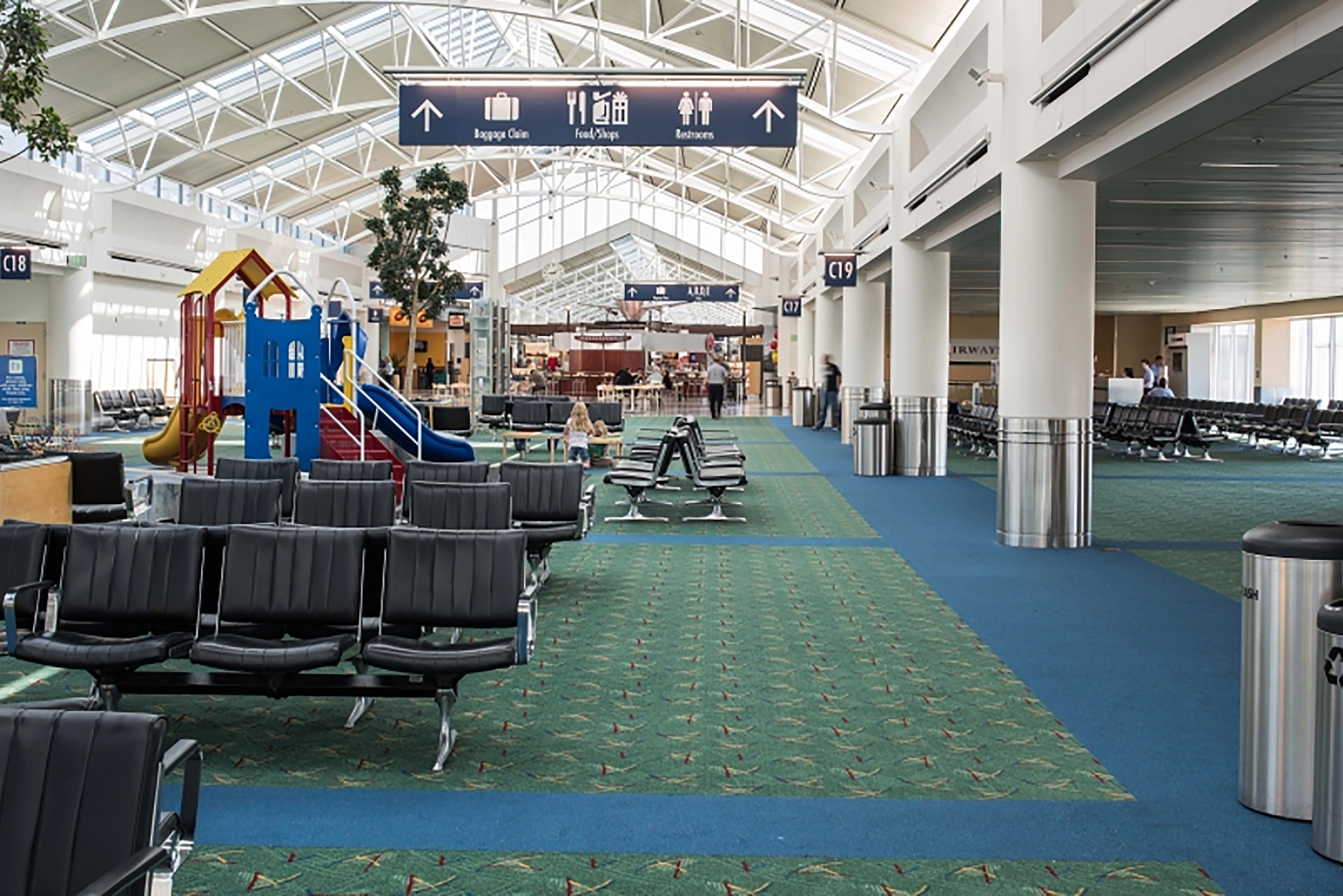Project:
Location:
Architect:
Markets:
Project Brief:
This was a complete recarpet of a fully operational airport. As a public space, the Portland Airport was losing their “Iconic” carpet pattern. To properly understand the importance of this event, please google Portland Airport Carpet and that will give you a good but limited taste of the significance of this project. The project achieved national attention – Wall Street Journal, Smithsonian, NBC Nightly News, New York Times.
PROJECT STRATEGY
This project could be entered into any of 3 categories – Public Space, Unique Installation, or Environmental Achievement. This was a complete recarpet of a fully operational airport. As a public space, the Portland Airport was losing their “Iconic” carpet pattern. To properly understand the importance of this event, please google Portland Airport Carpet and that will give you a good but limited taste of the significance of this project. The project achieved national attention – Wall Street Journal, Smithsonian, NBC Nightly News, New York Times. The main carpets are a very special design and construction of 12′ wide patterned J+J carpet, 75,000sy; 4,000sy Tandus entry mat; 3,000sy of Tandus roll and carpet tile; 1,000sy of Bentley; and 4,000lf of Johnsonite rubber base. 10 miles of carpet border work. Pattern tolerance of 1/8″ at all borderwork and no visible deviation in pattern across the length and width, all net cut to stainless steel base. Approximate manpower of 20 men for 10 months – 5 nights a week from 9pm till 4am. The installation is incredible, the uniqueness of the installation is incredible, but the real story is environmental: of what we accomplished with the 14 acres of removed material as well as the new scraps generated from this project.
ENVIRONMENTAL ACHIEVEMENT STRATEGY
Owner selected solution dyed J+J Carpet Mills product with a 28% recycled content, 100% sustainable. J+J carpet will be recycled in the future if that is deemed to be the best environmental choice at the time of replacement. As you will see in our summary below, our environmental story is beyond recycled content, sustainability, and LEED points even though those were important factors. Our project was about direct reuse of used carpet again, as carpet or art, without additional processing and direct recycling into carpet pad. Previous carpet that was replaced was 6,6 fiber, so our options were limited. The real challenge of this project was how to dispose of the existing 14 acres of carpet in the most environmentally conscious manner. The contract documents required that this material could not be landfilled but left the means and methods to achieve this up to the successful bidder. Waste-to-energy was an approved method of disposal. We took the approach that we would address all the jobsite materials, not just the carpet. As well, we would try to achieve the highest form of recycling that we could achieve. We were able to re-purpose (upcycle) many of the products so that we could give them another life without recycling. The carpet was re-purposed into entry mats, area rugs, wall art, Christmas ornaments, community center carpet, flooring for a renovated a 100-year-old building, baseball practice hitting facility etc. etc. We were able to salvage – re-purpose (upcycle): 10,080sy; 25.2 tons; 2.08 acres of PDX “iconic” carpet; 17% of area We were able to salvage – re-purpose (upcycle): 10,930sy; 38.12 tons; 2.26 acres of “other carpet from project”; 18% of area A total of 21,000sy of carpet, we were able to re-purpose (upcycle). We recycled the balance of the carpet to Reliance Pad: 45,000sy; 134.48 tons; 8.3 acres; 66% of area Repurposed the cardboard cores into shipping cores: .44 tons Recycled plastic film, cardboard, scrap metal: 1.94 tons Repurposed the wood pallets – into pallets, furniture, yard art: 1.12 tons Total re-purposed (upcycled): 66.58 tons 27%; recycled: 136 tons 56%; landfill: 41 tons 17% Approximately 50% of our landfill weight was concrete grindings because we had a large area that required moisture-proofing. All scraps of the new carpet in excess of 2′ were saved and have been given to a vendor to make entry mats and area rugs for resale as the new carpet pattern makes its attempt to fill the shoes of the outgoing “Iconic” pattern. The “new” pattern appears to be on its way to getting there, as the initial offering of entry rugs has been a big success.






